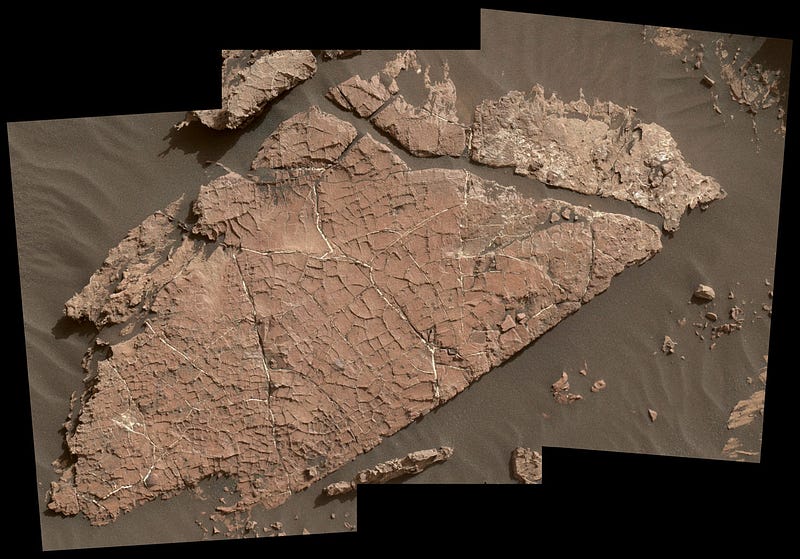Unraveling the Secrets of Mars: From Oasis to Desert
Written on
The Transformation of Mars
Current scientific consensus suggests that Mars, informed by data from the Spirit, Opportunity, and Curiosity rovers, along with various orbiting satellites, once boasted significant quantities of liquid water on its surface. The ongoing inquiry into the fate of these water reserves and the planet's shift from a warmer, wetter environment to today's icy desert is a subject of intense research.
Evidence from Gale Crater
Gale Crater, the landing site of Curiosity, is strongly believed to have hosted a lake at some point in its history. Geological features such as clay and sulfate minerals, which typically form in the presence of water, alongside indicators like fans and deltas—characteristics observed on Earth—support this theory. This crater may have contained freshwater that was once clean enough for human consumption. For an insightful overview of Gale Crater and the conditions Curiosity is investigating, check out the introductory video below:
As Curiosity explores the lower regions of Mount Sharp within Gale Crater, it has uncovered signs of a long-standing lake. The rover's ascent has revealed rocks rich in mineral salts, suggesting these deposits formed in salty ponds that experienced cycles of drying and wetting—consistent with a partially functioning hydrological cycle. Future investigations will take Curiosity to the "sulfate bearing unit," where scientists hope to analyze its composition to shed light on Mars' prolonged dry period.
The Geological Journey
Curiosity's journey up the slopes of Mount Sharp is essentially a trip through time, moving from the planet's distant past toward its present. If the sulfate-bearing unit shows a consistent increase in sulfate concentrations, it will indicate a gradual progression toward aridity on Mars without significant reversals. Conversely, if the sediment layers exhibit alternating patterns of moisture and dryness, it would suggest that the planet's drying occurred in a stepwise manner over an extended timeframe.

The mystery of Mars’ Water History
There are substantial questions regarding the duration of water's presence on Mars. The belief in a wetter ancient Mars stems from the observation that craters from the Noachian Era (approximately 4.1 to 3.7 billion years ago) exhibit far greater erosion than those formed during the Hesperian period (3.7 to 3.0 billion years ago). Gale Crater, estimated to have formed between 3.8 and 3.5 billion years ago, falls within this critical transitional phase of the planet's history.
Several theories exist to explain how Mars might have sustained liquid water for billions of years, even amid challenges posed by the dim early Sun. It is posited that early Mars retained heat from radioactive decay within its core. Nonetheless, Mars is considerably smaller than Earth, lacking sufficient heavy elements and the short-lived, high-energy elements necessary for sustaining warmth. The Late Heavy Bombardment is believed to have bombarded Mars with significant impacts, occurring roughly every million years, alongside a much higher frequency of smaller impacts.
The Tharsis Bulge, a massive volcanic region on Mars, may also have influenced the planet's climate. Its sheer mass could have caused 'true polar wander,' shifting the locations of the poles. The cessation of Mars' geomagnetic dynamo and the consequent loss of its magnetic field also likely played a role. Understanding the timeline of water loss on Mars is crucial for grasping the processes that have shaped the planet.
Further Exploration
Now Read:
- NASA’s InSight Lander Beams Back the Sounds of Mars
- Mars Orbiter Finds Giant Cache of Ice on the Red Planet
- Here’s What a Solar Eclipse Looks Like on Mars
The first video titled "Mars Mystery Revealed: Is There Life in the Ice?" explores the potential for life beneath Mars' icy surface. Watch the video to uncover fascinating insights:
The second video titled "Mars study suggests 'hidden ocean' under planet's surface – but there's a catch" delves into the intriguing findings of a possible subsurface ocean. Check it out below for more details: